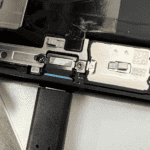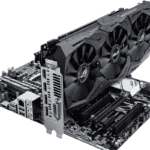Deleting all resources in AWS can be a daunting task. Many users find themselves needing to start fresh or clean up their accounts. This process requires careful planning and execution to avoid unintended consequences.
To delete all resources in AWS, you can use tools like AWS CLI, AWS Management Console, or third-party solutions like aws-nuke. These methods allow you to remove multiple resources at once. It’s crucial to review your account and identify all active resources before starting the deletion process.
Safety should be your top priority when deleting AWS resources. Always double-check that you’re working in the correct account. It’s wise to create backups of important data before proceeding. Remember that some deletions are irreversible.
Key Takeaways
- AWS offers multiple tools for deleting resources in bulk
- Careful planning and review are essential before deleting AWS resources
- Always prioritize safety and create backups before deleting AWS resources
Preparing for Resource Deletion
Before deleting AWS resources, it’s crucial to plan and prepare. This ensures a smooth process and prevents accidental deletion of important assets.
Understanding AWS Resources and Regions
AWS offers many types of resources across different regions. These include EC2 instances, S3 buckets, and VPCs. Each region operates independently. This means resources in one region don’t affect others.
It’s important to know which regions have active resources. The AWS Management Console shows this info. Users can switch between regions easily. This helps in tracking all assets.
Some resources might be linked across regions. For example, IAM is a global service. Changes here affect all regions.
Identifying Resources to Delete
Finding all resources to delete is key. The AWS Management Console is a good starting point. It gives an overview of active resources.
The Billing and Cost Management Console helps too. It shows which resources are costing money. This is useful for finding forgotten assets.
Here’s a quick checklist of common resources to check:
- EC2 instances and EBS volumes
- S3 buckets
- VPCs and security groups
- IAM users, roles, and policies
- RDS databases
- Lambda functions
CloudTrail logs can reveal less obvious resources. They show recent API calls and resource creations.
Using AWS Management Console
The AWS Management Console is user-friendly. It allows manual deletion of resources. Here’s how to use it:
- Log in to the console
- Choose a service (e.g., EC2, S3)
- Select the resources to delete
- Click “Delete” or a similar option
This method works well for small-scale deletions. It gives users control over what’s removed. The console also shows resource dependencies. This helps avoid errors from deleting linked resources.
For larger cleanups, the console can be slow. In such cases, automation tools are better.
Automation Tools for Deletion
For bulk deletions, automation tools are faster and more efficient. AWS-Nuke is a popular choice. It can delete all resources in an account.
To use AWS-Nuke:
- Install the tool
- Create a config file (nuke-config.yml)
- Run AWS-Nuke with the config
Other tools like Terraform and CloudFormation can also help. They can destroy resources they created. This is useful for managed environments.
The AWS CLI is another option. It allows scripted deletions. This is good for users comfortable with command-line tools.
Remember to test these tools in a safe environment first. They can cause major data loss if used incorrectly.
Executing the Deletion Process
Deleting all resources in AWS requires careful planning and execution. There are automated tools and manual methods to remove resources safely and efficiently.
Using AWS-Nuke
AWS-Nuke is a powerful tool for deleting AWS resources. To use it:
- Install AWS-Nuke on your computer
- Create a config file with your account details
- Run a dry-run to see what will be deleted
- Execute the deletion with the –no-dry-run flag
AWS-Nuke can delete most resource types. It’s fast and thorough. But be careful! Double-check your config file before running.
You can set filters to keep certain resources. This helps protect important data. Always back up critical info before using AWS-Nuke.
Manual Deletion Approaches
Manual deletion is slower but gives more control. Steps to delete manually:
- Start with non-dependent resources like EC2 instances
- Remove networking components (VPCs, subnets)
- Delete storage resources (S3 buckets, EBS volumes)
- Remove IAM roles and users last
Use the AWS Management Console or CLI for manual deletion. The console is easier for beginners. The CLI is faster for experts.
Be methodical. Keep a checklist of resources to delete. This helps ensure nothing is missed.
Monitoring and Confirming Deletion
Track the deletion process closely. Use these methods:
- Check the AWS Cost Explorer to see if charges stop
- Review the AWS Bill for any ongoing costs
- Use AWS Config to verify resource removal
Set up CloudWatch alarms to alert you of any new resources. This catches anything that might have been missed.
After deletion, wait a few days. Then do a final check of your account. Look for any leftover resources or unexpected charges.
Remember to cancel any AWS support plans if you’re closing the account completely.
Frequently Asked Questions
Deleting AWS resources requires careful planning and execution. Here are some common questions about removing resources from AWS accounts and regions.
How can I remove all resources associated with a particular tag in AWS?
To delete resources with a specific tag:
- Use the AWS CLI or SDK to list resources with the tag
- Create a script to delete each tagged resource
- Run the script to remove all matching resources
Be careful when using tags to delete resources. Double-check the tag values before running any deletion scripts.
What steps are required to completely wipe data from all AWS services?
To wipe all data from AWS:
- Delete or terminate EC2 resources like instances and volumes
- Remove data from S3 buckets and delete the buckets
- Delete databases and their backups
- Remove data from other services like EFS and Redshift
- Delete IAM users roles and policies
Check each service console to ensure all data is removed. Some services may have hidden data that needs manual deletion.
What is the process to delete every resource within a specific AWS region?
To delete all resources in one region:
- List all services used in the region
- Go through each service console and delete resources
- Use AWS CLI to find and remove any leftover resources
- Double-check service quotas to spot any remaining items
Be thorough when deleting regional resources. Some may have dependencies that prevent easy deletion.
How can I find and terminate all active services currently running in my AWS account?
To find and stop all running services:
- Check the AWS Bills page to see active services
- Use AWS Config to get an inventory of resources
- Go through each service console to stop or terminate resources
- Use AWS CLI to find any hidden running services
AWS Nuke is a tool that can help delete all resources in an account. Use it with caution.
Can I delete my AWS account along with all its associated resources?
Yes you can close your AWS account. But first:
- Back up any data you want to keep
- Delete or transfer resources to another account
- Cancel any active subscriptions or reservations
- Contact AWS support to start the account closure process
Closing an account is permanent. Make sure you really want to do this before proceeding.
What are best practices for cleaning up unused resources efficiently in an AWS account?
To clean up AWS resources efficiently:
- Use tags to track resource ownership and purpose
- Set up AWS Cost Explorer to find unused resources
- Create automated cleanup scripts for dev/test environments
- Use AWS Config rules to detect and remove unattached resources
- Regularly review and delete old snapshots backups and AMIs
AWS Delete All Resources tools can help but use them carefully. Always double-check before bulk deleting resources.






